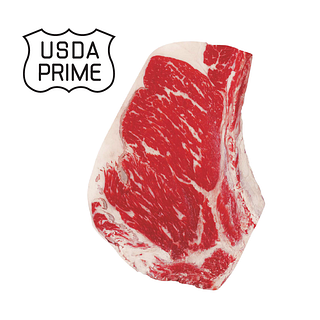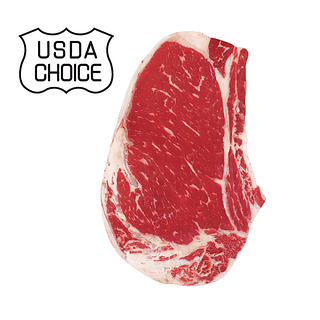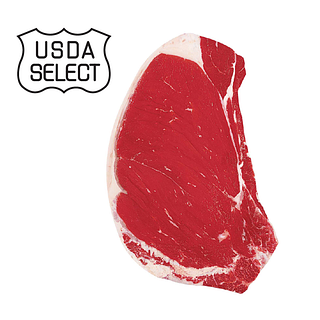Deciding the Label Know Your Beef Choices
Beef has long been America's favorite poly peptide and rightfully so equally information technology delivers bully flavor and powerful nutrition. At that place is a myriad of product labels in the marketplace and we are here to provide insight regarding what each label represents. We hope the following tips will give you a amend understanding of how to decipher your choices at the meat case and how to properly shop information technology once you get information technology habitation.
Beef grading sets the standards for the various quality levels of beef. The beef grading program uses highlight trained specialists and sometimes grading instruments to determine the official quality grade. Beef quality grading is voluntary and administered past the USDA and paid for past the beefiness packers.
The USDA'due south Agricultural Marketing Service (AMS) employs federal graders to class beef on expected palatability (tenderness, juiciness, and season). Quality Grades are evaluated on factors such as degree of marbling, and maturity of the beast. While you may not know the maturity of the beast, in that location are some visual cues to help determine quality grades.
color
The color of the meat should be bright, reddish red. Beef does brown as it is exposed to air. If you store beef in a Ziploc or other plastic bag with a small pigsty, you will notice it browns quickly in your refrigerator. While it does non hateful the meat has spoiled, you lot should still throw information technology out when in doubt. Alternatively, if you buy vacuum-packaged meat, it may announced darker. This is non a flaw with the meat, but rather a lack of oxygen passing through the packaging. The packaging is what allows information technology to stay fresh in your fridge longer than the standard Styrofoam and cellophane packaging.
Marbling
The white fat that is interspersed within the lean musculus. Sometimes, especially in grass-finished beef, the fatty tin can appear more yellow in color due to the animal'south nutrition prior to harvesting. While extra-lean cuts provide a great choice for those individuals requiring a low-fat diet regimen, information technology's as well important to recognize that marbling greatly affects flavour. That is why the caste of marbling is one of the primary determinants in quality grade.
So where does this leave y'all? In the grocery store, you'll run into quality grades printed on the characterization.Primeis the superlative-tier for expected palatability,Choice is near mutual, andSelect is the leanest choice available in (some) groceries stores. Learn more about the USDA's AMS Beef Grading Program!
Factors In Determining Quality Grade:
- Distribution of Marbling within Lean Muscle at twelfth/13th Rib
- Age/Maturity of Carcass
- Color, Texture and Firmness of Lean Musculus
PRIME

Prime beef is produced from young, well-fed cattle. Information technology has abundant marbling, is produced in smaller quantities than other grades, and is oftentimes sold in hotels and restaurants. Prime roasts and steaks are splendid for roasting, grilling or broiling.
Choice

Option beef is high quality and produced in highest quantity, simply has less marbling than Prime. Choice is the most popular grade of beef in grocery stores. Pick roasts and steaks, especially from the rib and loin, will be very tender, juicy and flavorful. They are suited for roasting, grilling and broiling. Less tender cuts are perfect for dull-cooking.
SELECT

Select beef is slightly leaner than Prime number and Option because it has less marbling. It can lack some tenderness, flavor and juiciness every bit compared to the higher grades. Select grade beef oftentimes benefits from slow-cooking or from marination prior to grilling or broiling.
Normally Asked Questions:
Q1: What if i am buying from a local source that doesn't have a quality grade?
Beef is inspected for wholesomeness and safety (mandatory), but that does not mean information technology was also graded. Grading beefiness is voluntary and non all smaller packers have their beefiness graded. Yous tin can utilize the guide above to help yous make a purchasing decision. Please as well annotation, grass-finished beef tends to be bacteria. This will impact the manner you cook information technology for maximum flavor, and then be sure to enquire your source for recommendations.
Q2: What about nutritional information on beefiness cuts?
Beef sold in traditional supermarkets or order stores is required to have the nutritional information displayed at the signal of buy for about mutual whole muscle beef cuts. Ground beefiness is required to accept the nutritional label on pack. If you purchase your beef through a non-traditional market place such as at a farmers market, a modest co-op or direct from a farm family, information technology might non have nutritional information on it. We invite you to wait upward the nutritional information on your beef cuts on the Interactive Butcher Counter. This online tool will as well offer yous recipe ideas for each cut of beef as well.
Q3: What does "no Hormones" or "Natural" Actually Mean When Seen On A Bundle of Beef?
Understanding the labeling claims on a pack of beef can be confusing. The USDA's Food Safety Inspection Service (FSIS) works to ensure those claims remain consistent across the board from one producer to another. In an effort to assistance clarify some confusion, USDA'southward FSIS put together a glossary of common labeling terms, such as "Certified," "Organic," "Natural," "No Hormones," and "No Antibiotics." USDA's Agriculture Marketing Service (AMS) oversees the Process Verified Program, which is a verification service that offers companies and brands a unique manner to market place their products to the public using conspicuously defined, implemented, and transparent process points. View the Process Verified Program Infographic for more information.
Q4: What does That "BQA" Symbol mean Adjacent To Some of the beef farms listed in this directory?
A large part of the beef manufacture's task involves making sure that beef is safe and wholesome for consumers. BQA (Beefiness Quality Assurance) began equally an effort to ensure that violative chemical residues were non nowadays in marketed beef. Originally called "Beefiness Safety Assurance," the program'due south early emphasis was on assuring the real and perceived safety of beefiness. Notwithstanding, BQA has become much more than a safe assurance programme.Today, BQA programming is expanding with information to help producers implement best direction practices that improve both quality grades and yield grades of beef carcasses. Previous National Beef Quality Audits have summarized that the number one leverage indicate to improve competitiveness and regain market place share was to improve beef quality, uniformity and consistency. Additionally, the sectors that sell beef products indicated that improvements were needed in tenderness, palatability and a reduction in excess trimmable fatty.
Many consumers are familiar with quality grades and may make purchasing decisions based on quality grades at retail. But, within the consumer atmosphere the term "quality" can be confusing. Consumers and even producers oft find it difficult to distinguish between the various and different ways to ascertain "quality" with regard to beef. Nosotros tin can better understand "quality" if we dissect the various contexts in which we consider quality. Click here to larn more almost the Beef Quality Balls Program.
Source: https://www.iabeef.org/raising-beef/iowa-local-beef-directory/learn-from-the-labels
0 Response to "Deciding the Label Know Your Beef Choices"
Post a Comment